Longleaf Alliance: Lab Studies in Hurricane Ecology

Join the members of the Jones Center Landscape Ecology Lab as we present our latest research at the 15th Biennial Longleaf Conference, taking place from October 7 to 11, 2024, in Miramar Beach, Florida.
Presentations from our lab will focus on hurricane ecology in longleaf pine, considerations for management hurricane risk to longleaf pine ecosystems, and two lab members will debut work on hurricane ecology using dendrochronological and remote sensing techniques
New study: Overstory and litter properties drive fuel dynamics
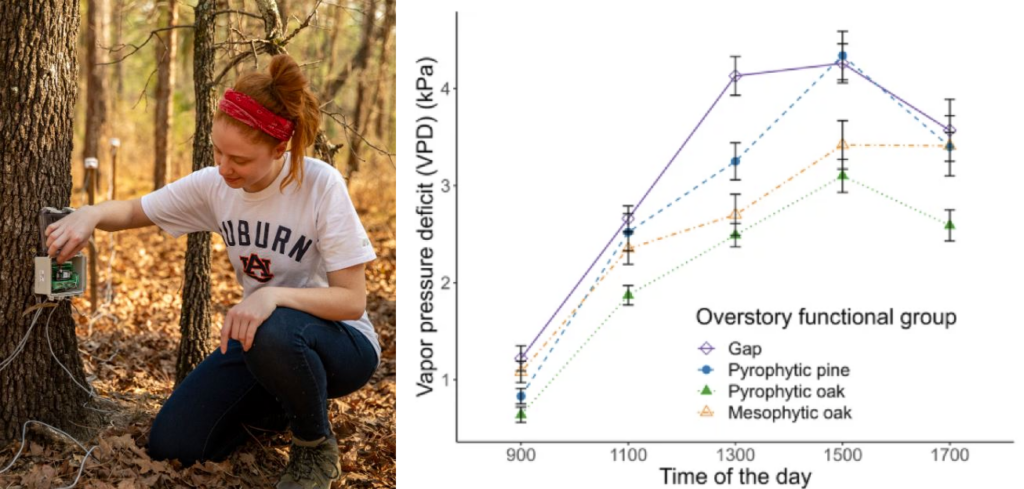
The composition of fire-dependent forests can shift after decades of fire exclusion. Forests can shift to trees with distinct overstory and leaf litter traits that can further suppress fire and make restoration difficult. We compared how leaf litter and overstory properties differed between fire-adapted pines and oaks, and the non-fire adapted species that often encroach after fire suppression. We found that trees produced distinct microclimates and that drying properties of leaf litter varied among species. This information is useful for understanding mesophytic encroachment and for accelerating successful restoration efforts
Module 1: Getting started with LiDAR processing for forestry and natural resources
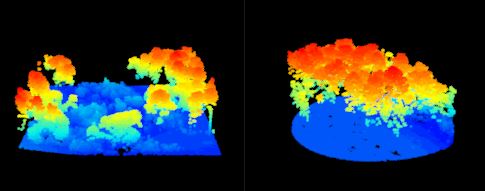
If you are interested in learning to use LiDAR for forestry and natural resources, this tutorial can help you get started. You will learn to view large datasets, create raster products, map trees, and more!
PNAS: New study defines hurricane regimes for North American forests
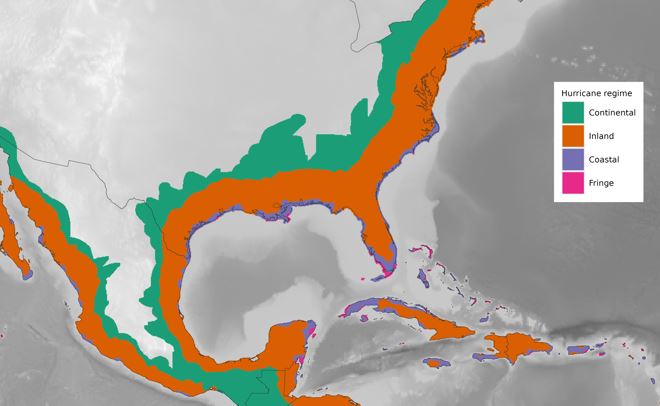
Hurricanes are a chronic disturbance to many forests. but currently no study defines hurricane regimes for North America. This study uses hurricane models and long-term data to define four distinct hurricane regimes for the region, and discusses how hurricanes may be a useful lens for understanding the distribution of tree species and their traits.
New Study: 48 Wildlife species use uprooted longleaf pine root mounds
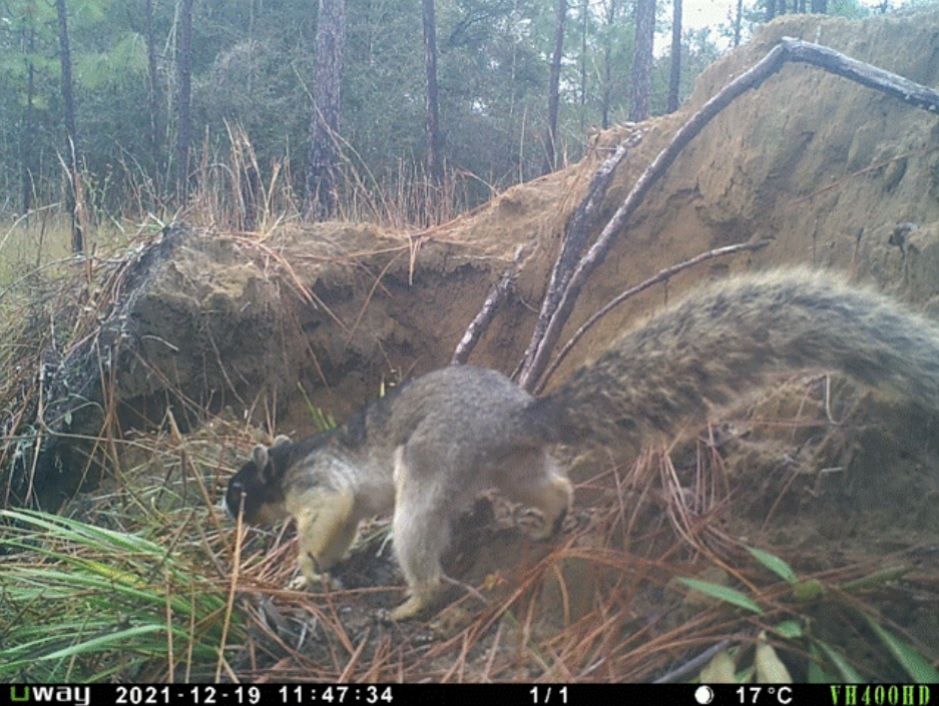
We partnered with the Herpetology lab in a new study which showed that uprooted longleaf pine tip-ups—created when trees fall—provide a brief but critical wildlife habitat. Using >1 million camera-trap photos, we documented 48 vertebrate species using the mounds to forage, perch, bask, or shelter. The study highlights how even short-lived storm features support biodiversity and should factor into post-disturbance management decisions.
New Study: Terrestrial lidar provides accurate and objective measures of crown scorch

A new study from our lab shows that terrestrial LiDAR scanning (TLS) can measure crown scorch in longleaf pine with unprecedented speed and objectivity. TLS provides high-resolution, quantitative estimates of fire-caused crown damage—at least 20× faster than traditional ocular methods. The CrownScorchTLS R package makes these tools accessible for researchers and land managers, enabling more precise, mechanistic studies of fire impacts on forests.
Now Recruiting: MS Assistantship in Hurricane Ecology at UCF and the Jones Center
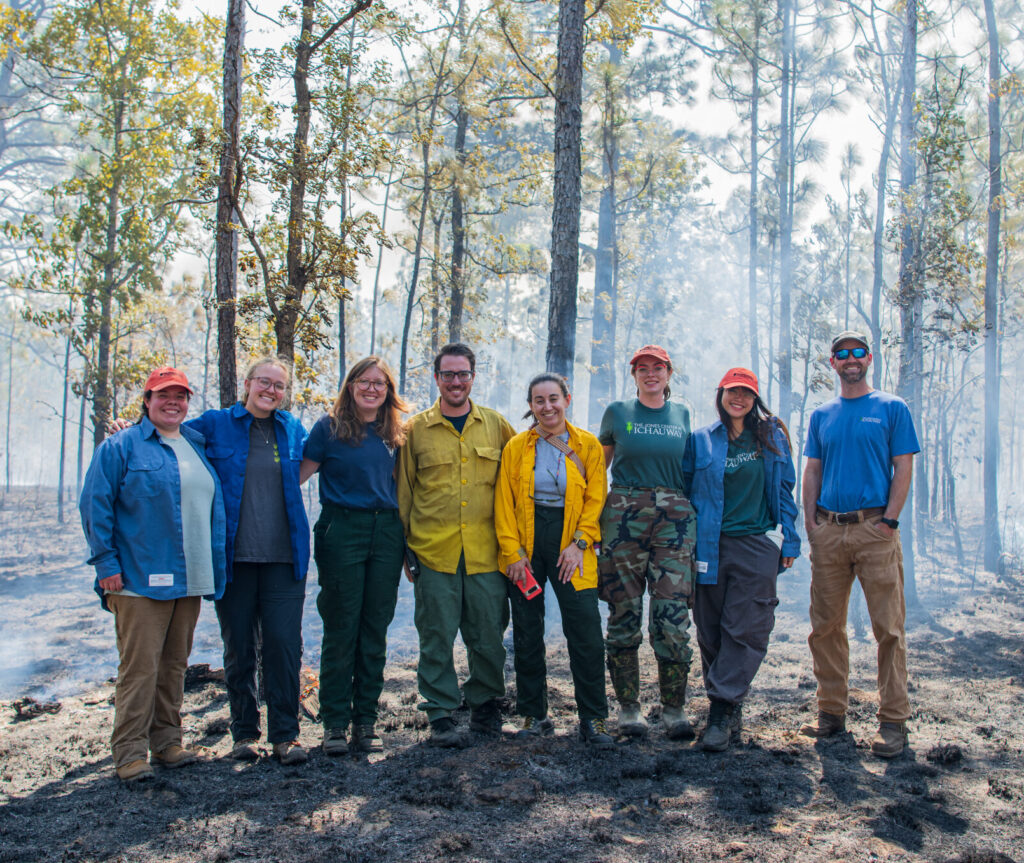
A new MS assistantship is available to study how hurricanes shape southern ecosystems through long-term data and new fieldwork. The position, jointly mentored by Dr. Nicole Zampieri (UCF) and Dr. Jeffery Cannon (Jones Center), begins Fall 2026 and includes full funding. The student will explore how storms and management practices drive forest recovery and plant communities across the southeastern U.S
Landscape Ecology Lab welcomes Khanh Ton
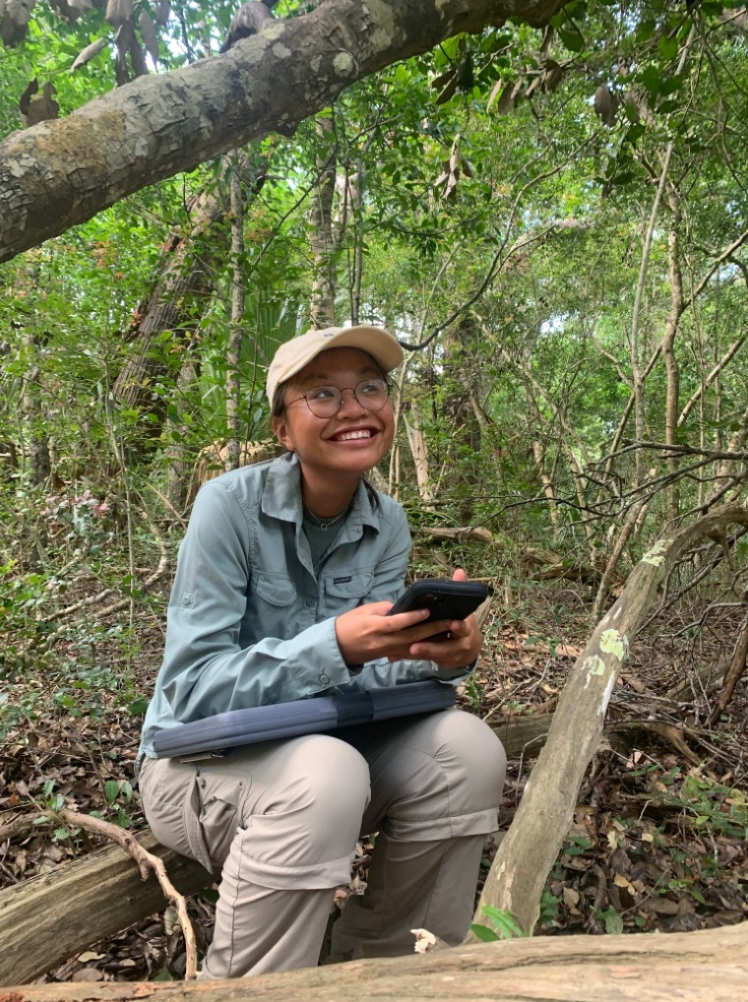
The Landscape Ecology lab is excited to welcome Khanh Ton as our new Geospatial Analyst! Khanh recently earned her MS from the University of New Hampshire, where she studied how prescribed fire supports red oak regeneration. At the Jones Center, she will lead projects using drones, lidar, and satellite imagery to assess longleaf pine habitat quality. Her geospatial expertise will strengthen our lab’s efforts to apply cutting-edge technology in conservation.
Building hurricane-resilient longleaf pine forests
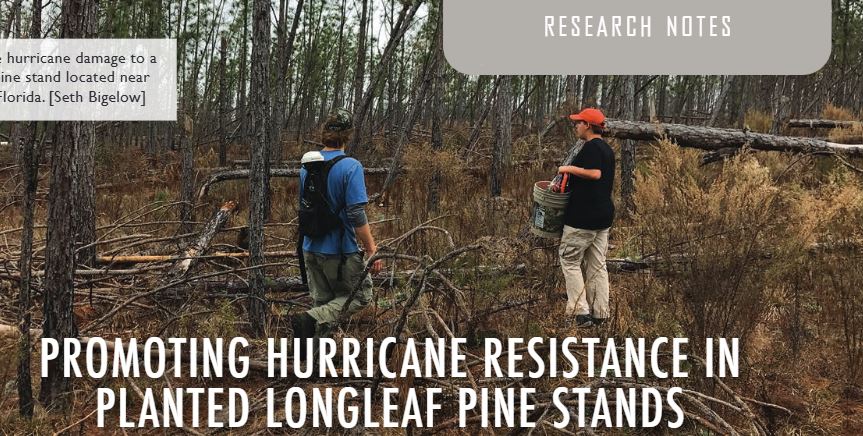
The Longleaf Leader recently featured our research published in Forest Ecology and Management, which guides how landowners can help longleaf pine forests withstand hurricanes. By managing stand density, encouraging tree taper, and maintaining landscape connectivity, planted longleaf stands can be made more wind-resistant, highlighting practical steps to ensure restoration efforts endure in a hurricane-prone future. Check it out on the Longleaf Alliance website
Scienmag highlights labs work on hurricane threats to Longleaf Pine ecosystems
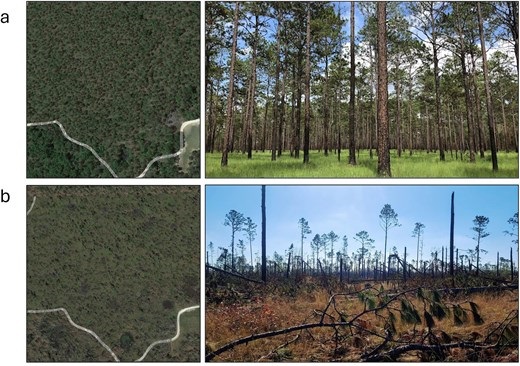
A new study led by lab post-doc Nicole Zampieri was recently featured on Scienmag. The article highlights our work on quantifying the escalating hurricane risks threatening North America’s iconic longleaf pine ecosystems. This research reveals how intensified hurricane activity and compounded stressors imperil biodiversity-rich coastal savannas. Our work underscores the urgent need for adaptive management strategies to safeguard these vital ecosystems under climate change.
New paper: Optimizing forest restoration to boost streamflow in Georgia watersheds
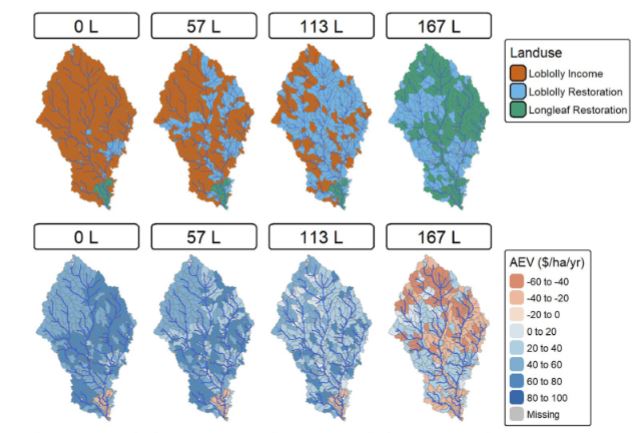
Can restoring pine savannas improve water flow? Our lab’s new study, led by Chambers English and Seth Younger, shows how forest restoration can be strategically optimized to meet streamflow goals in Southwest Georgia. Using vegetation and hydrologic modeling, the team identifies the most cost-effective areas for pine savanna restoration to support ecological and economic goals.
Mid-Summer Check in from the Aquatic Sciences Lab
The calendar turns to August and we take a breath to reflect on a busy spring and summer! The heat and gnats have been ever present, the flows have been dropping, and the Jones Center never sleeps! Here’s what we’ve been up to the first part of the summer and what’s planned for the rest […]
How longleaf pine patches shape fire: New research and podcast interview on Fire Ecology Chats

George Jensen, an MS student in our lab, recently led a study published in the journal Fire Ecology exploring how dense patches of regenerating longleaf pine influence fuel structure and fire behavior. We joined Bob Keane on the Fire Ecology Chats podcast to discuss the paper, answer questions, and talk about what these feedbacks mean for forest restoration. Tune in to the episode to hear more about how fire, fuels, and vegetation interact in the longleaf pine ecosystem!
Sierra Magazine highlights forest impacts from Helene and lab’s ongoing research on forest resilience

A new Sierra article explores the long-term impacts of Hurricane Helene on Western North Carolina’s forests, including tree loss, fire risk, and shifting species composition. Our lab contributed insight into how storm damage affects forest resilience and recovery. Understanding these dynamics is key to guiding restoration efforts and preparing for more frequent, intense storms in the region.